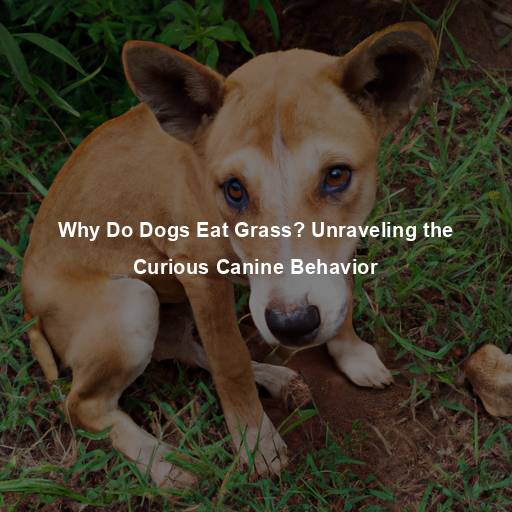The Mysterious Phenomenon of Locking in Dogs When They Mate
Last Updated on July 29, 2023 by Evan
Contents [hide]
- 1 Understanding the Locking Phenomenon
- 1.1 The Mechanics of Locking
- 1.2 Maximizing Fertilization
- 1.3 Enhancing Reproductive Success
- 1.4 Bonding and Pairing
- 1.5 Duration of Locking
- 1.6 Safety Measures
- 1.7 Seeking Veterinary Assistance
- 1.8 The Beauty of Nature’s Design
- 1.9 An Ancient Instinct
- 1.10 Preventing Rival Sperm
- 1.11 Promoting Genetic Diversity
- 1.12 Social Bonding and Cooperation
- 2 Factors Influencing Locking Duration
- 3 Common Misconceptions About Locking
- 4 Fascinating Cultural Beliefs About Locking
- 5 Ethical Considerations and Responsible Breeding
- 6 The Intricacies of Canine Reproduction
- 7 FAQs: When Dogs Mate, Why Do They Lock?
- 7.1 What does it mean when dogs lock during mating?
- 7.2 How long do dogs stay locked when mating?
- 7.3 Is it harmful or painful for dogs to be locked together during mating?
- 7.4 Can the dog become stuck if they lock during mating?
- 7.5 How can I prevent dogs from locking during mating?
- 7.6 Is it possible for dogs to get stuck even after the tie is complete?
- 7.7 How often can a female dog accept a male during her heat cycle?
Understanding the Locking Phenomenon
In the realm of canine reproduction, there exists a captivating behavior that captivates curious minds – “locking” or “tie”. This enigmatic process manifests when the male canine’s erect penis swells within the female’s intimate parts, creating an undeniable bond between the two. It beckons us to question the purpose behind this entangled exchange – what secrets lie within the intricacies of this enticing act? With a thirst for knowledge, let us embark on a journey into the uncharted territories of canine mating, uncovering the enigmatic allure that lies within.
The Mechanics of Locking
When it comes to the intimate moments of dogs, things can get a bit peculiar. In the fascinating world of canine mating, the male dog possesses a unique anatomical feature known as the “bulbus glandis”. This mysterious structure, nestled at the base of the penis, undergoes a burst of transformation during mating. Picture this – as blood flow intensifies, the bulbus glandis swells up, creating a perplexing knot-like formation that securely interlocks with the female dog’s vagina.
Maximizing Fertilization
When it comes to dogs, the way they lock together during mating may seem puzzling at first glance. However, this behavior serves a crucial purpose in their reproductive cycle. By staying connected for an unpredictable duration, which can vary greatly from a fraction of time to a substantial period, the male dog ensures that his precious semen is properly deposited in the female’s reproductive system. This intricate connection guarantees the most favorable conditions for efficient sperm transfer, ultimately enhancing the chances of fertilization and the continuation of their lineage.
Enhancing Reproductive Success
In the mysterious realm of canine reproduction, a peculiar phenomenon called “locking” takes center stage. Far beyond a simple act of coupling, it holds the key to securing the future of a dog’s lineage. Through this enigmatic behavior, male dogs forge an unbreakable bond during intimate moments, effectively warding off any rivals’ advances, protecting their precious prize, and maximizing their chances of legacy. A tapestry of intricate strategies to amplify reproductive triumph unravels before our eyes, highlighting the complexity nestled within the animal kingdom.
Bonding and Pairing
Locking during mating serves a crucial reproductive purpose, but its significance surpasses mere biology. Beyond facilitating successful reproduction, locking acts as a catalyst for deep emotional connections and companionship between mating dogs. As the act triggers the release of oxytocin and other hormones, a remarkable sense of attachment and bonding ensues, fostering an extraordinary closeness between the male and female. Solidifying this connection, the physical embrace of locking solidifies and strengthens the bond between the pair, creating a profound and unbreakable relationship.
Duration of Locking
When it comes to the mating dance of our furry friends, there’s no one-size-fits-all answer. There are a myriad of factors at play, from the breed of the dogs to their unique physiological quirks, that can send the duration of the tie on a wild rollercoaster ride. On average, you can expect the locking period to clock in at a modest 10 to 30 minutes, but don’t be surprised if Mother Nature decides to throw a curveball and extend the intimate encounter beyond an hour. It’s a world of captivating complexity that keeps us humans perplexed, but that’s what makes the animal kingdom such a burst of unpredictable beauty.
Safety Measures
While the locking phenomenon is a natural part of the mating process in dogs, it is important to ensure the safety and well-being of both dogs involved. Owners should avoid attempting to separate the dogs forcefully during the tie, as it can cause injury to both the male and female. Instead, it is advisable to allow the dogs to naturally disengage once the tie is complete.
Seeking Veterinary Assistance
It’s not uncommon for dogs to experience some hiccups in their love-making sessions, and occasionally these hiccups can turn into longer-than-expected lockdowns or unexpected complications. If things start to get out of hand, lasting over an hour or distressing either of the pups, it’s definitely time to reach out to a trusted veterinarian. They have the knowledge and expertise to guide you through the situation, and if needed, step in and save the day to ensure the well-being and safety of these furry friends.
The Beauty of Nature’s Design
Have you ever been left scratching your head at the strange and perplexing locking phenomenon that occurs during mating in dogs? Well, fear not, because this captivating behavior is actually a testament to the remarkable intricacy of nature’s design. It reveals the cunning strategies that animals employ to ensure their reproductive success and ultimately perpetuate their species. So next time you witness this seemingly puzzling act, take a moment to marvel at the wondrous complexity and astounding diversity of life on our extraordinary planet.
In conclusion, the locking phenomenon in dogs during mating serves a vital role in ensuring successful insemination and maximizing reproductive success. This unique behavior, although puzzling at first glance, is an essential adaptation that has evolved over time. As we delve deeper into the mysteries of the natural world, let us marvel at the wonders of nature and the intricate mechanisms that drive life’s most basic instincts.
Stay tuned for more fascinating insights and heartwarming stories about our beloved canine companions on PetsRoof.com, your go-to source for all things pets!## The Evolutionary Significance of Locking
An Ancient Instinct
The locking phenomenon in dogs is not unique to domesticated canines but can be observed in various wild canid species as well. This suggests that the behavior has deep evolutionary roots and serves a fundamental purpose in the survival and reproduction of these animals.
Preventing Rival Sperm
One of the key advantages of locking is that it helps to prevent the female dog from mating with other males immediately after copulation. By physically connecting with the female, the male dog can inhibit the entry of rival sperm into the reproductive tract, thus increasing the likelihood that his own sperm will successfully fertilize the eggs. This mechanism acts as a safeguard, ensuring that the male’s genetic material has a higher chance of passing on to the next generation.
Promoting Genetic Diversity
While locking may favor the male dog’s reproductive success, it also serves to enhance genetic diversity within a population. By engaging in extended copulatory ties, female dogs have the opportunity to assess the quality of the male’s genes and choose the most suitable mate. This process, known as cryptic female choice, allows for the selection of genetically diverse offspring, which can contribute to the overall fitness and adaptability of the species.
Social Bonding and Cooperation
Mating is much more than a simple act of reproduction for dogs; it is an intricate dance of trust and understanding that brings them closer together. As they engage in locking, a unique bonding experience takes place, weaving the delicate threads of their relationship. This deep connection between the mating pair fosters a sense of cooperation and teamwork, ensuring the well-being and survival of their precious offspring.
Factors Influencing Locking Duration
Breed Variations
Locking duration in dogs can differ significantly depending on the breed. Some breeds may have a penchant for longer ties, while others experience shorter durations. This fascinating variability can be attributed to factors such as unique anatomical features, physiological variations, and individual genetic predispositions. It is crucial to acknowledge these breed-specific differences when gauging the normality of locking duration.
Level of Arousal
The level of arousal in both the male and female dogs can influence the duration of the tie. Dogs that are highly aroused or experiencing heightened sexual excitement may exhibit longer locking periods. Conversely, dogs with low arousal levels may have shorter ties. The intensity of the mating behavior and the strength of the bond between the mating pair can also impact the duration of the lock.
Environmental Factors
When it comes to the duration of locking behavior in dogs, various environmental aspects come into play. The presence of other animals or distractions can add a touch of unpredictability to the mating process. Dogs lucky enough to engage in their amorous activities in a peaceful and secure setting, void of any disturbances, might experience a more prolonged connection compared to those amidst stressful or unfamiliar surroundings. It turns out that the comfort and safety of the mating pair can significantly influence the overall length of their intimate bond.
Common Misconceptions About Locking
Injury or Distress
Contrary to popular belief, locking during mating is not inherently harmful or distressing for the dogs involved. While it may appear uncomfortable or intense, the act of locking is a natural and necessary part of the mating process. However, it is important to ensure the well-being of the dogs and intervene if the tie exceeds an hour or causes distress to either animal.
Permanent Attachment
When it comes to the birds and the bees, we’ve all heard of locking, that momentary intermission when two dogs become one. But listen up, folks, don’t even think about breaking up the party! Trying to force them apart can lead to unwanted consequences. Just let nature take its course and wait for the ties that bond to naturally unravel.
Oxytocin: The “Love Hormone”
Doggy Love: The Science Behind the Intense Connection
Prepare to be amazed as we unlock the mysteries of the deep emotional bond that occurs during dog mating! Brace yourself for a wild ride down the hormone highway, as we delve into the realm of oxytocin, fondly known as the “love hormone” or even the “cuddle hormone”. This remarkable chemical is like the ultimate superglue for canine connections, fostering feelings of trust, bonding, and social attachment. Get ready to discover how oxytocin takes center stage during the magical dance of mating, captivating both male and female dogs and cementing an unbreakable emotional tie between them.
Vasopressin: Influencing Behavior
One fascinating hormone that greatly affects the intricate world of mating and territoriality is vasopressin. Known for its role in animals, this hormone plays a significant part in male dogs. During the act of mating, vasopressin floods the system, triggering a primal desire in the male to safeguard the female from any potential threats that may arise. This intricate interaction between hormones and behavior solidifies the bond between the mating pair, creating an enthralling spectacle of nature’s design.
Fascinating Cultural Beliefs About Locking
Symbolic of a Successful Union
In various cultures around the world, the locking phenomenon in dogs during mating has been associated with beliefs and superstitions. Some cultures view the locking as a symbol of a successful union and a sign of fertility. It is believed that witnessing dogs locked together during mating brings good luck and ensures a fruitful and harmonious relationship between couples.
Folklore and Legends
Throughout the annals of mythology and folklore, the enigmatic phenomenon of locking has weaved its intricate tendrils. Enveloped in the tapestry of ancient tales, this captivating concept serves as an emblem of unwavering devotion, tenacity, and the profound essence of a bond. Legendary chronicles embellish the image of steadfast hounds, standing sentinel as devoted protectors and companions, elevating the symbolic embrace of locking to an ethereal plane that epitomizes unyielding allegiance.
Ethical Considerations and Responsible Breeding
Responsible Breeding Practices
Understanding the intricacies of canine reproduction is key when it comes to the perplexing phenomenon of locking. However, it is crucial to approach this aspect of breeding with a mindset of both responsibility and mindfulness. Only those with a deep reservoir of knowledge and a strong sense of responsibility towards the welfare of our furry companions should embark on this journey. Taking into account factors such as genetic health, temperament, and overall suitability for breeding is paramount for the ultimate well-being of these precious beings.
Avoiding Unintended Pregnancies
When it comes to the complex dance of canine courtship, one must tread carefully to avoid the unexpected twists and turns that can lead to the pitter-patter of unintended puppy paws. Unplanned romances between dogs can result in the perplexing predicament of unwanted pregnancies. To curb this canine conundrum, responsible pet owners must take action, such as spaying or neutering their furry companions, as well as providing the necessary supervision to prevent impromptu encounters with unfamiliar or untested partners.
The Intricacies of Canine Reproduction
Unique Reproductive Strategies
The locking phenomenon in dogs is just one example of the remarkable diversity of reproductive strategies observed in the animal kingdom. From intricate mating rituals to complex mechanisms for sperm competition, each species has evolved strategies that maximize their reproductive success. Understanding the intricacies of canine reproduction enhances our appreciation for the complexity and diversity of life on Earth.
A Window into Evolution
The study of locking in dogs provides valuable insights into the evolutionary history and adaptations of canids. By examining the similarities and differences in locking behaviors across different species, scientists can unravel the evolutionary relationships and trace the origins of this fascinating reproductive strategy. Such research contributes to our understanding of the evolutionary forces that have shaped the animal kingdom.
FAQs: When Dogs Mate, Why Do They Lock?
What does it mean when dogs lock during mating?
Locking, also known as the “tie” or “copulatory tie,” is a natural and instinctive behavior that occurs when male and female dogs mate. This phenomenon happens due to the bulbospongiosus muscles in the male’s reproductive system. When fully engaged, these muscles cause the male’s erect penis to swell and become trapped inside the female’s vagina, creating a physical connection that allows for successful reproduction.
How long do dogs stay locked when mating?
The duration of the lock varies among individual dogs, but typically dogs remain locked for as little as a few minutes to as long as half an hour or more. It depends on various factors such as the size and breed of the dogs involved, their individual physiology, and their level of stimulation. The period of the tie is essential for successful breeding as it ensures proper insemination and increases the chances of pregnancy.
Is it harmful or painful for dogs to be locked together during mating?
Rest assured, the act of dogs being locked together during mating is a completely natural occurrence that may puzzle us as humans. Far from being harmful or painful, this phenomenon actually plays a crucial role in the reproductive cycle. This instinctive tie enables optimal chances of successful fertilization, ensuring the continuation of their species. It is important to respect this process by leaving the canines undisturbed to complete their mating ritual in their own, unique way.
Can the dog become stuck if they lock during mating?
While the physical connection created by the tie may cause dogs to appear stuck together, they are not truly stuck or in any danger. Due to the natural design of a dog’s reproductive system, the swelling of the male’s penis prevents immediate separation, but this gradually subsides over time. Attempting to forcefully separate the dogs can lead to injury and should be avoided. It is crucial to allow the tie to dissolve naturally, ensuring a safe and successful breeding process.
How can I prevent dogs from locking during mating?
Preventing dogs from locking during mating is not recommended as it interferes with the natural reproductive process. The tie is an important part of successful breeding and ensures optimal chances of fertilization. Attempting to prevent the lock can disrupt the mating process and potentially reduce the likelihood of pregnancy. It is best to allow dogs to mate naturally and undisturbed without intervention, unless there is a specific medical reason to do so, in which case consulting a veterinarian is advised.
Is it possible for dogs to get stuck even after the tie is complete?
Canine intimacy can sometimes delve into perplexing territory, and one such curious phenomenon is the uncommon occurrence of vaginal hyperplasia in dogs. In this unusual condition, the female’s muscles stubbornly clench, leading to a confounding challenge for the male counterpart to disengage even after the completion of their delicate connection. In such bewildering circumstances, it becomes imperative to promptly seek professional aid from a skilled veterinarian to safeguard the well-being of both furry companions involved. Rest assured, the expert medical intervention will facilitate a safe separation of the entangled dogs whilst addressing any potential complications that may arise from this enigmatic situation.
How often can a female dog accept a male during her heat cycle?
When it comes to our furry friends, there’s no shortage of surprises and mysteries, especially when it comes to the fascinating world of canine reproduction. Take, for example, the enigmatic phenomenon known as the heat cycle, or estrus. Female dogs, being the complex creatures that they are, experience this intriguing cycle twice a year, all while keeping us humans on our toes. Lasting roughly three weeks, this puzzling reproductive timeline involves a female dog potentially accepting a male for breeding on multiple occasions, adding an extra layer of bewilderment to the mix. However, the experts suggest that precautionary measures should be taken to ensure the female’s well-being and allow her body ample time to recover. Responsible breeding, in consultation with knowledgeable professionals such as veterinarians or experienced breeders, is key to safeguarding the health of the female and potential offspring, sparing us from a whirlwind of perplexity.







